Yoruba Hairstyles: History, Meanings, and Cultural Significance of Traditional Nigerian Hair Art
When you think of hairstyles Yoruba called it ‘Irun didi’, what comes to mind? For the Yoruba people of Southwest Nigeria, hair is more than just a fashion statement — it’s a language as well. Yoruba hairstyles are not just about looking good; they tell stories, show social status, and even connect people to their gods. Imagine your hair being a canvas, and every braid, knot, or bead is a brushstroke that paints a picture of who you are.
That’s the magic of Yoruba hairstyles!
The Cultural Significance of Hair in Yoruba Society
In Yoruba culture, hair is a big deal. It’s not just about an aesthetics art; it’s about identity. The Yoruba believe that your hair is a part of your soul. There’s even a saying in Yoruba that says, “A kii di irun tabi ge irun leyin olori,” which means you can’t plait or cut someone’s hair without their permission.
Why?
Because your hair is a representation of YOU. It’s like your personal signature.
The Role of Hair in Yoruba Identity
Hair as a Symbol of Beauty and Status
For Yoruba women, hair is their crowning glory. The saying “Irun ni ewa obinrin” (the hair is the beauty of a woman) says it all.
A well-plaited hairstyle can make a woman feel like a queen. But it’s not just about beauty. Hairstyles also show social status.
For example, certain styles are reserved for married women or priestesses. It’s like wearing a badge that tells the world who you are.
The Spiritual Connection: Hair and Yoruba Deities
Did you know that Yoruba gods and goddesses also care about hair? Take Osun, the goddess of beauty and fresh waters. She’s said to be the first hairdresser!
The Yoruba believe that the earth itself is a woman who combs her hair with a hoe while farming. This shows how deeply connected hair is to their spirituality.
Popular Yoruba Hairstyles and Their Meanings
Suku Hairstyle: The Royal Crown
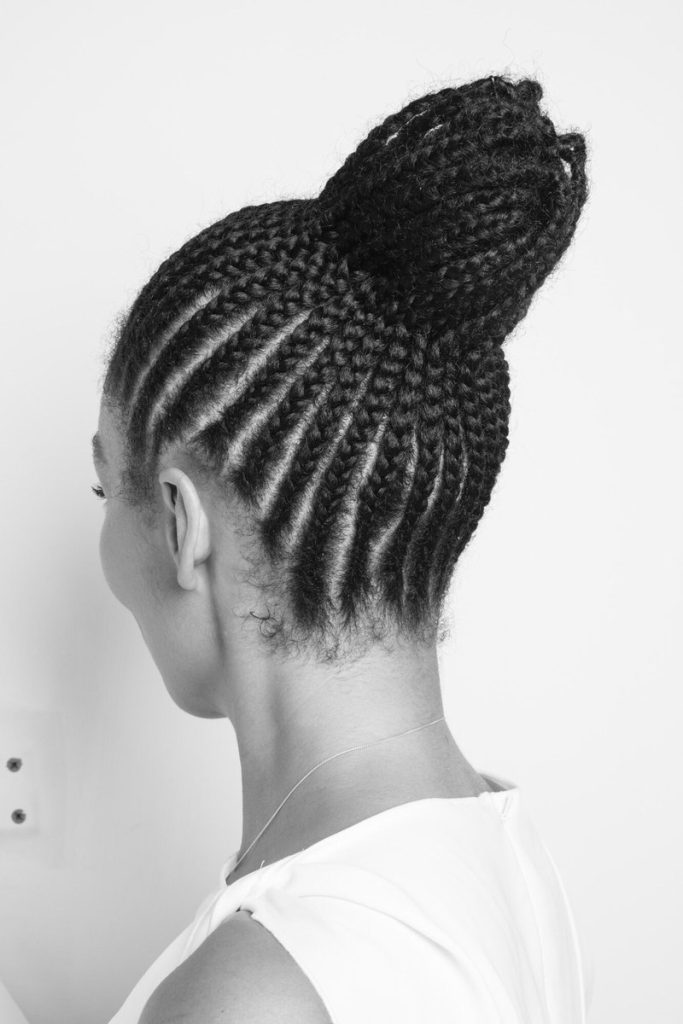
https://x.com/EmmaDabiri/status/1168573621880664069
The Suku hairstyle is one of the most iconic Yoruba hairstyles. It’s a style where braids run from the forehead, sides, and back of the head to the crown.
It’s like wearing a crown, which is why queens often wore it. There’s even a variation called Suku Ologede, which uses the “sleeping didi” method. It’s as elegant as it sounds!
I used to remember when i was in secondary school every friday, Aunty Bisi will say “Your next week hairstyle is Suku Elewo. lol Meaning Blent Suku..
Suku Ologede: The Sleeping Didi Method
This style is a bit more intricate. The braids are done in a way that they lie flat, almost like they’re sleeping on the head. So this tyoe of style requires skill and patience, but the result is breathtaking.
Koroba Hairstyle: The Upside-Down Calabash
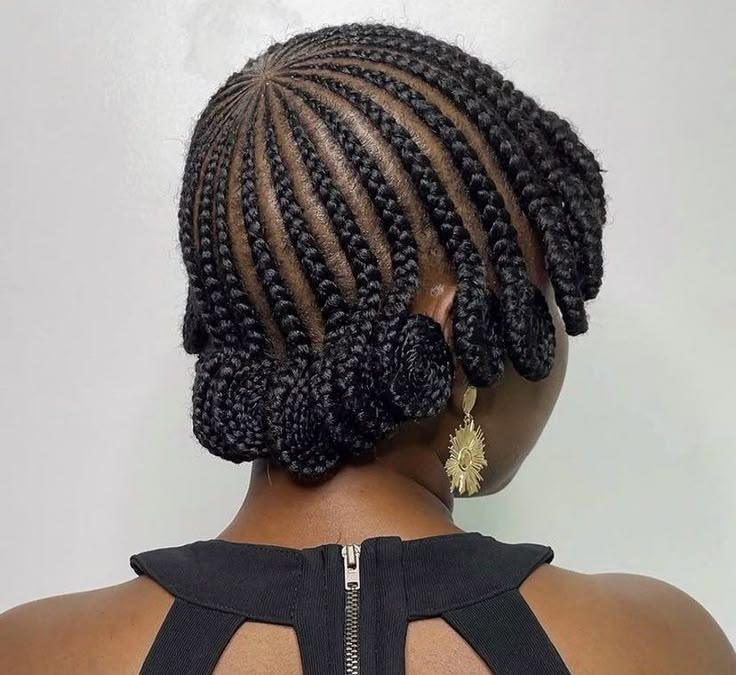
https://in.pinterest.com/pin/yoruba-braids-koroba–369928556910018873/
The Koroba hairstyle is named after a calabash turned upside down. The hair is beautifully woven from the center of the scalp down to the front, rear, and sides.
The ends are usually knotted and decorated with beads. It’s a style that’s both elegant and symbolic.
Kolese Hairstyle: The Curly Elegance
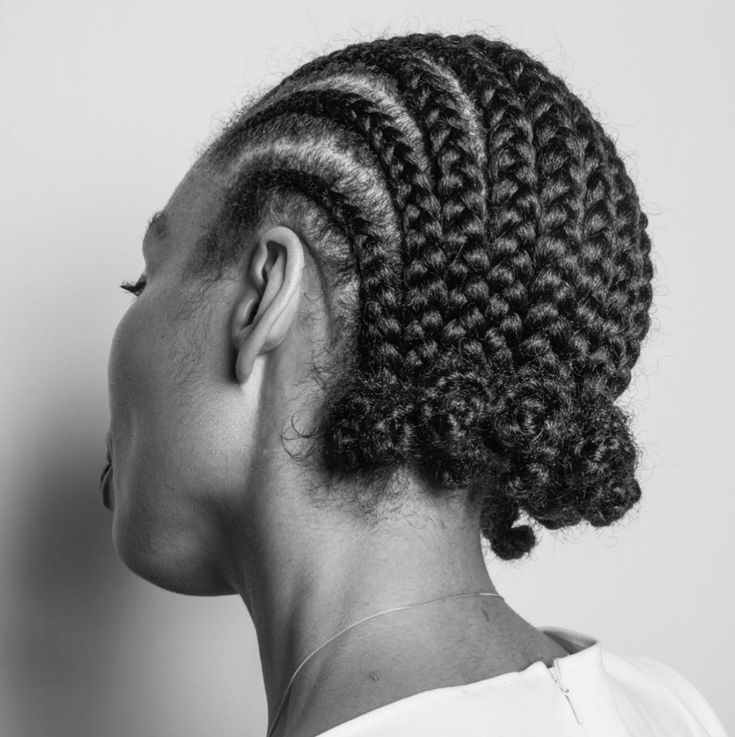
https://www.pinterest.com/pin/431360470572929381/
Kolese means “without legs,” and this style got its name because the ends of the hair curl up instead of standing straight.
It’s a braided style that runs from the front of the head to the back, close to the neck. It’s simple yet stunning.
Ipako-Elede Hairstyle: The Pig’s Back
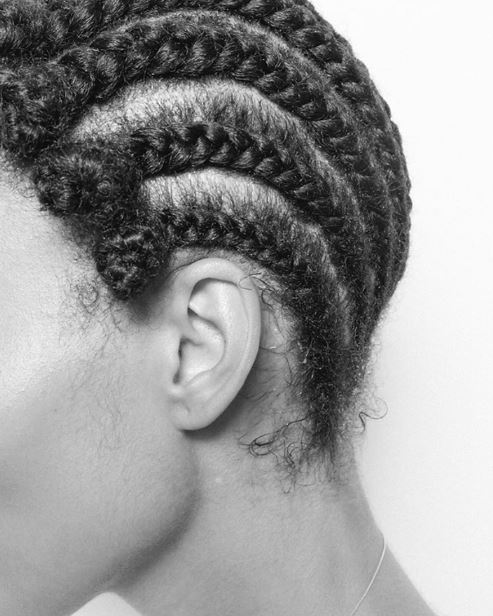
https://www.a2omag.com/stories/the-canerow-chronicles-by-emma-dabiri
This style is named after the back of a pig’s head. The cornrows run from the rear of the head and end at the top, close to the forehead.
It’s a unique style, but it’s becoming rare because many women don’t like how the back of their head looks after making it.
Panumo Hairstyle: The Silent Beauty
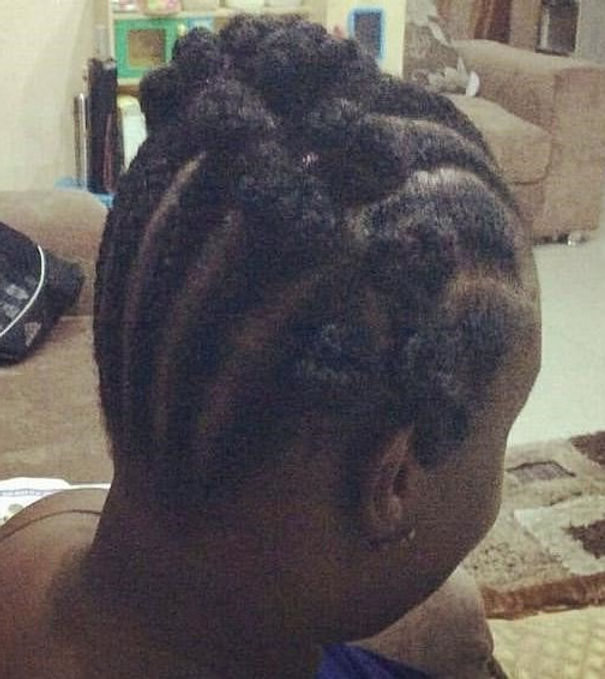
https://www.instagram.com/yorubahairstyles/p/BrAtl6TBJdA/
Panumo means “keep quiet,” and this style is as intriguing as its name. The cornrows start from different points and meet at the center of the head, forming a little opening that looks like a mouth. It’s a style that speaks without words.
Orisabunmi Hairstyle: A Gift from the Gods
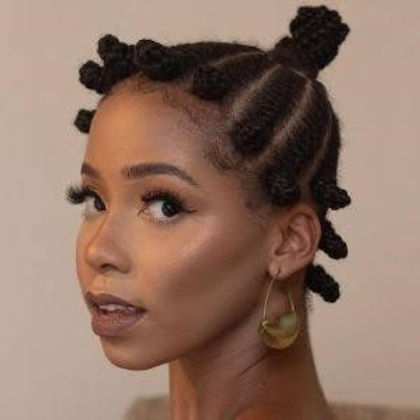
https://africaheritages.wordpress.com/2021/02/17/braids-an-age-long-secret-that-will-blow-your-mind/
This style is named after a female diviner called Orisabunmi. It’s similar to the Aafin Oba style but has its own unique touches. It’s a style that’s both spiritual and beautiful.
Agogo Hairstyle: The Cockscomb
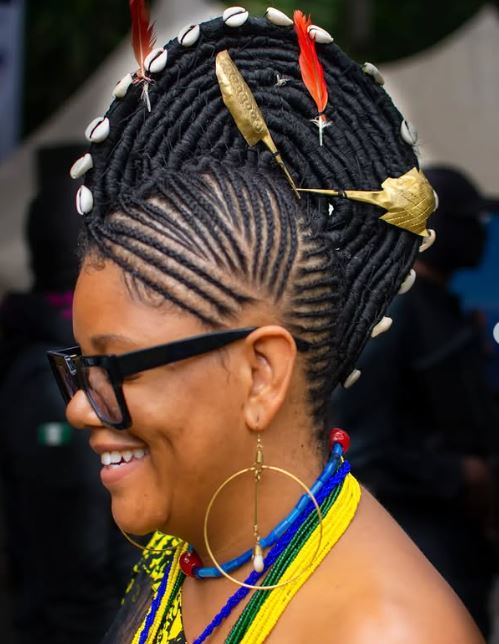
https://www.instagram.com/osunosogbofest/p/DClzVrEOnXt/?img_index=1
The Agogo hairstyle is designed to imitate a cockscomb. It’s a style worn by married women or priestesses. It’s bold, beautiful, and full of meaning
Hairstyles and Social Status in Yoruba Culture
Hairstyles for Married Women and Priestesses
In Yoruba culture, your hairstyle can tell people if you’re married or a priestess. Styles like Agogo are often worn by married women, while others are reserved for priestesses. It’s like a secret code that only those in the know can understand.
Hairstyles as a Rite of Passage
Hairstyles also play a big role in rites of passage. For example, when a girl becomes a woman, her hairstyle might change to reflect her new status. It’s a way of marking important milestones in life.
The Role of Hair in Yoruba Religion and Rituals
Hair in Yoruba Religious Cults
Hair is also important in Yoruba religious cults. For example, priests and devotees might shave part of their head or dye their hair to show their affiliation with a particular deity. It’s a way of showing devotion and respect.
The Connection Between Hair and Yoruba Deities
Yoruba deities like Osun and Esu have a special connection to hair. Osun, as the first hairdresser, is often invoked during hairdressing rituals. Esu, the messenger god, is associated with hairstyles that feature bilateral asymmetry, like shaving one side of the head.
The Evolution of Yoruba Hairstyles
Traditional vs. Modern Yoruba Hairstyles
While traditional Yoruba hairstyles are still popular, modern influences have started to creep in. Today, you might see Yoruba women combining traditional styles with modern twists, creating something entirely new.
The Influence of Yoruba Hairstyles on Global Fashion
Yoruba hairstyles have also made their way onto the global stage. From runways to red carpets, these styles are being embraced by people all over the world. It’s a testament to their timeless beauty and cultural significance.
Conclusion: The Timeless Beauty of Yoruba Hairstyles
Yoruba hairstyles are more than just a way to look good—they’re a way to express identity, status, and spirituality. From the royal Suku to the spiritual Orisabunmi, each style tells a story. As the world becomes more connected, these hairstyles continue to inspire and captivate people everywhere
FAQs About Yoruba Hairstyles
1. What is the most popular Yoruba hairstyle?
The Suku hairstyle is one of the most popular and iconic Yoruba hairstyles, often associated with royalty.
2. Do Yoruba men also have special hairstyles?
Yes, Yoruba men also have unique hairstyles, especially those associated with specific roles like palace messengers.
3. Are Yoruba hairstyles still popular today?
Absolutely! While some traditional styles are less common, many Yoruba hairstyles have evolved and are still widely worn today.
4. What materials are used in Yoruba hairstyles?
Beads, threads, and sometimes even natural dyes are used to decorate and style Yoruba hairstyles.
5. Can anyone wear Yoruba hairstyles?
While anyone can appreciate and wear Yoruba hairstyles, it’s important to understand and respect the cultural significance behind them.
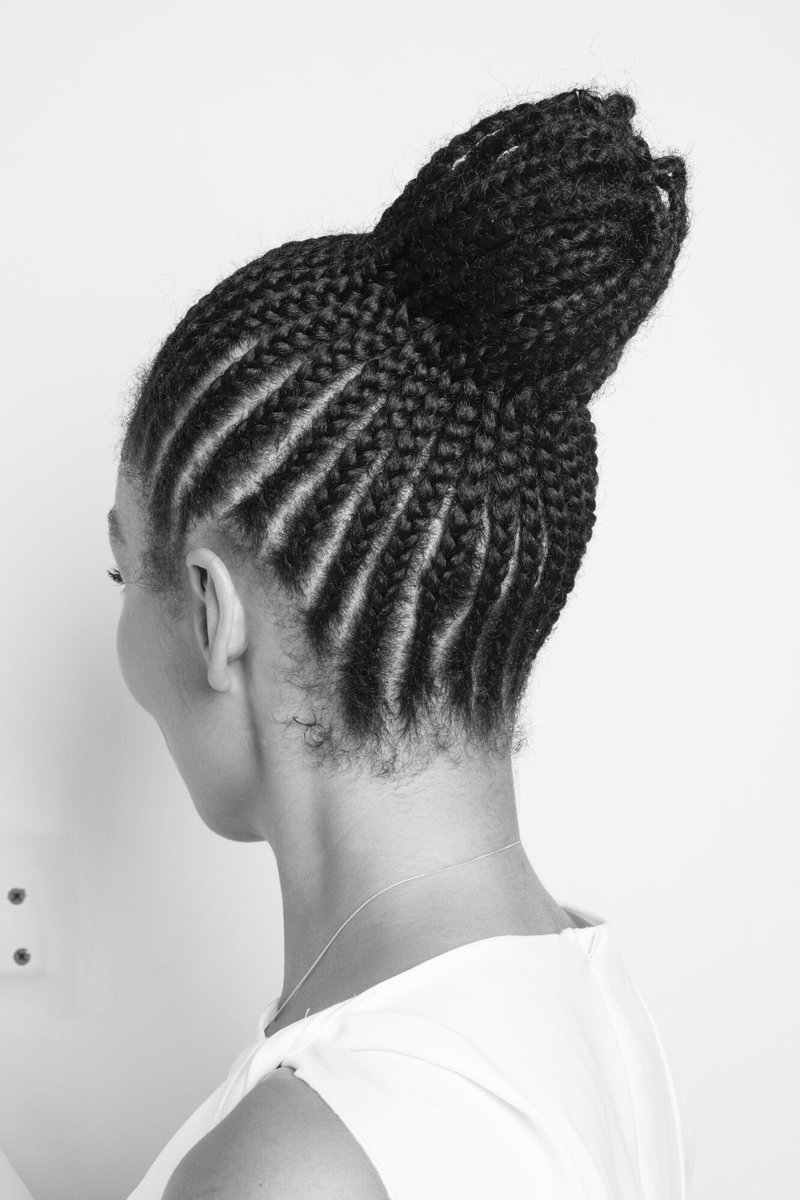

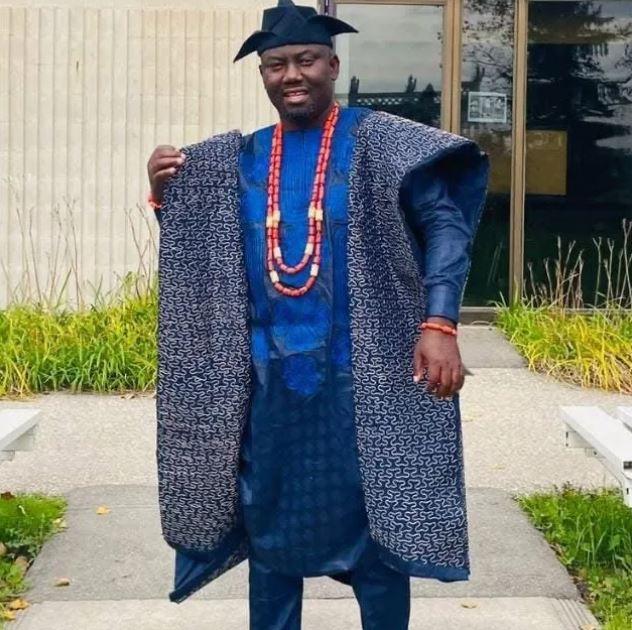

Post Comment